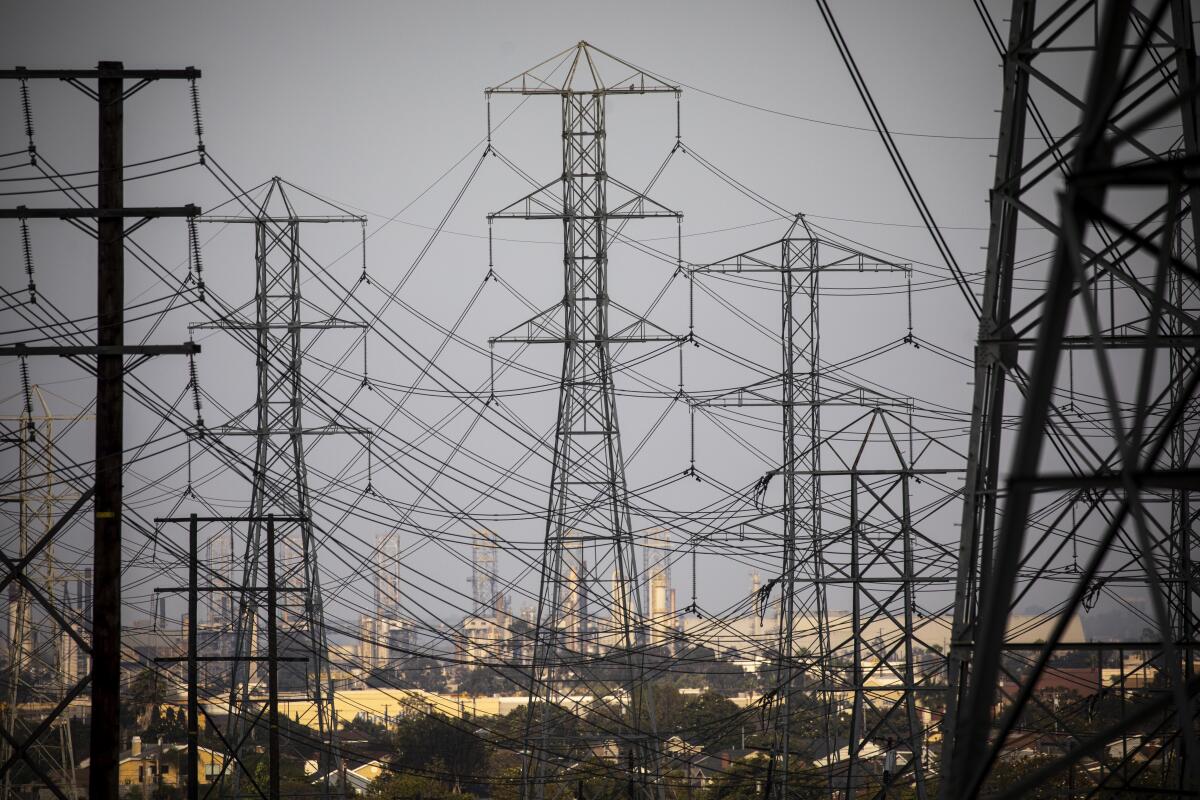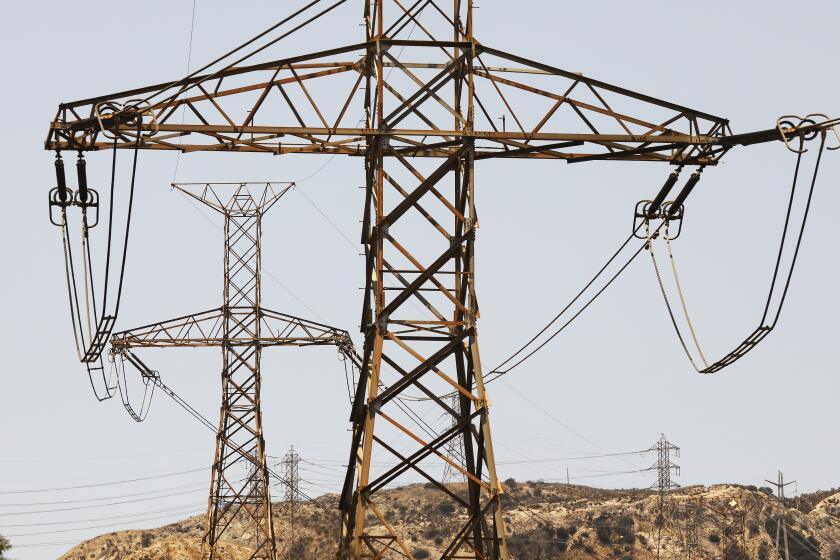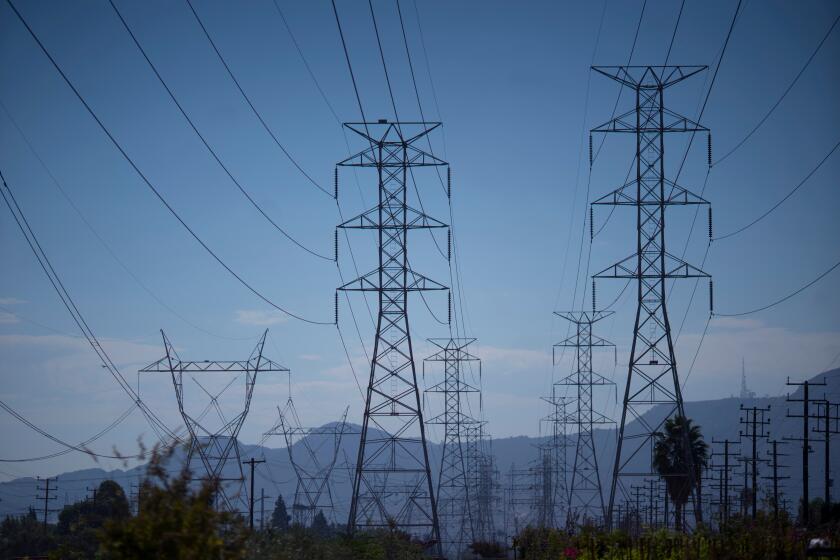PG&E warns over 500,000 customers of possible rotating outages as California heat wave drags on

- Share via
For a second day, California’s largest utility is warning customers to prepare for the possibility of rotating power outages as a brutal heat wave continues to pummel the state.
Pacific Gas & Electric Co. said Wednesday that it had notified about 525,277 customers to prepare for possible outages.
As of this afternoon, the California Independent System Operator, which manages the state power grid, has not asked utilities to implement rotating outages, but the San Francisco-based company opted to notify customers “out of an abundance of caution,” according to a statement by PG&E.
Should they be implemented, the rotating outages would affect customers for one to two hours, the utility said.
Here’s what to do before, during and after a power outage as a heat wave continues to scorch California.
PG&E officials said they are urging customers to continue conserving power after the ISO issued a Flex Alert for the ninth day in a row.
During a Flex Alert, customers are asked to reduce power use from 4 p.m. to 9 p.m. by setting their thermostats to 78 degrees or higher if their health permits; opening windows and doors, and using fans to cool their home if the temperature is cooler outside; not using major appliances; turning off unnecessary lights; and not charging electric vehicles while the alert is in place.
“Widespread heat events pose unique challenges to the state’s energy grid,” according to PG&E’s statement. “In addition to the energy supply concerns driving Flex Alerts, sustained high temperatures have the potential to damage electrical equipment, leading to local outages.”
On Tuesday evening, the Golden State narrowly averted widespread rolling blackouts.
Officials credit the emergency alert sent Tuesday night for the avoidance of widespread blackouts during record-setting energy demands.
Earlier that day, ISO officials readied local utility providers to implement rolling blackouts if conditions did not improve as power demand approached record levels.
Officials projected peak demand of 51,146 megawatts, but by Tuesday evening, California had set an all-time record of 52,061 megawatts.
Then, around 5:45 p.m., an emergency alert hit millions of Californians’ cellphones: “Conserve energy now to protect public health and safety.”
The alerts worked, Elliot Mainzer, president and chief executive of the ISO, said Wednesday.
Load reduction of about 2,000 megawatts over the next 20 to 30 minutes “took us back from the edge,” he said.
As of late Wednesday afternoon, the ISO had issued a Level 2 energy emergency alert. At Level 3 the grid operator can, if necessary, order rotating outages to bring demand back in line with available supplies.
More to Read
Sign up for Essential California
The most important California stories and recommendations in your inbox every morning.
You may occasionally receive promotional content from the Los Angeles Times.













